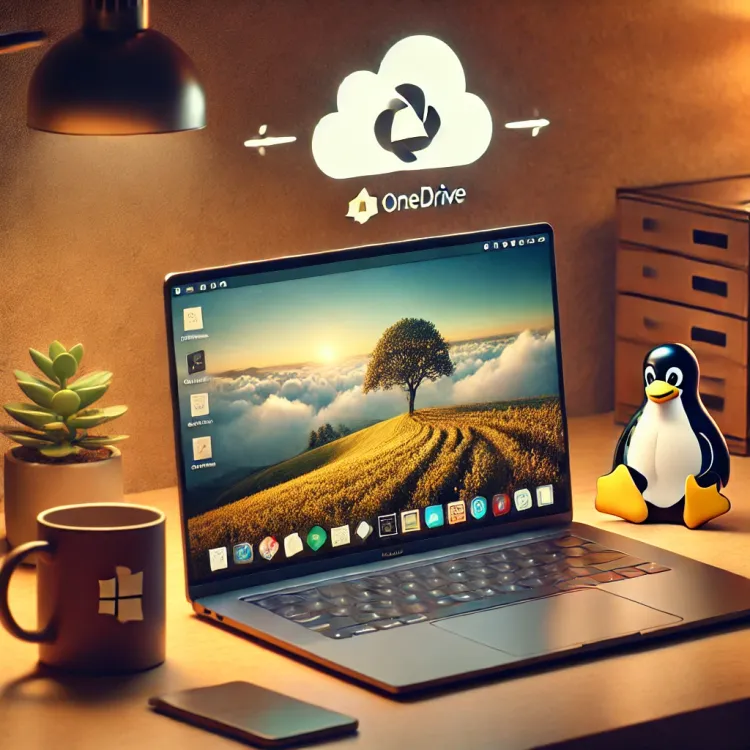Who Will Continue Your Family’s Tech Legacy?

For those of us deeply embedded in technology, there’s a unique kind of inheritance that goes beyond the usual assets passed down in a will. Over the years, many of us have built a personal tech ecosystem, a blend of digital assets, customised network setups, cloud services, security protocols, and perhaps even a library of media archives. Yet, while we might view these with pride, we’re also aware that, for the next generation, the fascination may lie solely in whether they connect smoothly and meet their needs.
In essence, if you’re like me, you’ve accumulated a “digital legacy.” This isn’t just about physical gadgets or servers but a thoughtfully curated tech stack that integrates a secure home network, collaborative tools, registered domains, and probably a cloud-based setup that brings all of this together seamlessly. The question is, once we’re no longer around to manage, update, and troubleshoot this tech ecosystem, who will keep it going? And more importantly, how can we ensure it serves future generations without becoming an overwhelming, out-of-date tech burden?
Let’s break down a few steps we can take to make this transition smoother—and maybe even inspire the next generation to embrace and maintain what we’ve started.
What Does It Mean to Leave a Tech Legacy?
First, it helps to clarify what a tech legacy actually is. In many ways, it’s a modern extension of what previous generations left behind: knowledge, values, and tools tailored for the times. For us, it could mean:
• Domains: Website domains we’ve purchased, possibly attached to family blogs, online portfolios, or side projects.
• Media Archives: Vast collections of photos, videos, and other digital memories stored on various devices or in the cloud.
• Network Configurations: A carefully configured home network, perhaps with specific security protocols, guest networks, and device hierarchies.
• Digital Security Measures: Tools like VPNs, password managers, and firewalls that protect our online identity and privacy.
• Software Subscriptions: Cloud-based services, productivity apps, and even entertainment platforms—many of which auto-renew annually.
For most of us, these elements are seamlessly woven into our daily routines. They function as the digital equivalent of a well-maintained house: secure, reliable, and tailored to our needs. However, to our less tech-minded family members or future generations, this ecosystem may feel daunting or, worse yet, irrelevant.
The Challenge of Passing On Digital Assets
When considering how to pass down this digital legacy, a few potential obstacles quickly arise. Some of these challenges are unique to tech:
1. Interest Levels: Many of us have put significant thought into our tech setups, but that doesn’t mean our family members share the same enthusiasm. Children, partners, or relatives might see it as little more than a “black box” of devices and accounts.
2. Complexity: Tech systems tend to grow complex over time. What began as a single home computer and Wi-Fi router might now include multiple IoT devices, cloud services, NAS (Network Attached Storage), and an array of login credentials.
3. Password and Access Management: Passwords are notoriously challenging to manage even for ourselves. Passing them on can be even trickier, especially when factoring in two-factor authentication, biometric logins, and secure access requirements.
4. Maintenance Requirements: Some of our systems require ongoing maintenance—whether it’s regular updates, patching, or simply keeping subscriptions active.
5. Future Compatibility: Technology is ever-evolving, and some of our tools may simply become obsolete. The server we proudly set up for media streaming might be overshadowed by new, easier options available to future generations.
Tips for Preserving and Simplifying Your Tech Legacy
With these challenges in mind, here are some practical steps to ensure your tech legacy is accessible and manageable for the next generation.
- Document the Essentials
Documentation is key to simplifying any technical process, and it’s no different when it comes to your tech legacy. Create a simple, easy-to-understand document that outlines:
• The purpose of each device, service, or setup.
• Any accounts associated with domains, cloud storage, or collaborative tools.
• Key passwords and access methods (perhaps in a password manager that can be accessed with one master password).
• Instructions for essential maintenance and updates.
This guide doesn’t need to be overly technical; the goal is to give your successors a clear path to understanding what’s in place and why it matters.
- Consider Using a Password Manager
Password management is one of the trickiest aspects of digital inheritance. A password manager simplifies this by consolidating all passwords into a single account, accessible with a master password. Some password managers even allow you to set up emergency contacts, ensuring family members can access your accounts if necessary.
- Consolidate and Simplify Your Setup
Over time, our tech setups can become sprawling and hard to manage. Wherever possible, look to streamline. For instance:
• Consolidate media archives into a single cloud account or NAS drive.
• Simplify home networks by eliminating unnecessary or rarely used devices.
• If multiple domains or subscriptions are redundant, consider letting them expire or consolidating under one primary account.
By creating a more streamlined setup, you’ll make it easier for future generations to manage—and less likely to feel overwhelmed.
- Automate Where Possible
Automation is a powerful tool for tech maintenance, and it can be a great way to ensure your systems remain functional even if no one is actively managing them. For instance:
• Set up automatic updates for your devices and software.
• Enable auto-renewal for critical subscriptions, with a clear plan for payment methods.
• Use automation tools to back up important files or media archives regularly.
The more you can automate, the less manual maintenance will be required in the future.
- Designate a “Tech Heir”
If you have someone in your family who shows even a slight interest in tech, consider guiding them through your setup. Offer to show them the basics and give them access to essential documentation. They don’t need to be a tech wizard—just willing to learn and occasionally troubleshoot.
For those without an obvious “tech heir,” consider reaching out to trusted friends or even professional services that specialise in digital estate management. Some professionals offer services for securing and passing down digital assets, ensuring your tech setup remains accessible for years to come.
Embracing the Value of Your Tech Legacy
While our tech ecosystems may seem inconsequential to the uninitiated, they’re often repositories of memories, values, and knowledge that we hold dear. By proactively managing how this legacy will be passed down, we give future generations a valuable resource—even if they only see it as a way to stay connected or access family memories.
The truth is, technology, like any family asset, carries its own form of legacy. Whether it’s the countless hours you spent curating media collections, setting up a secure network, or creating a space for digital collaboration, these contributions are part of what we leave behind. With a bit of planning, we can ensure they’re passed down as useful tools rather than outdated tech relics.




